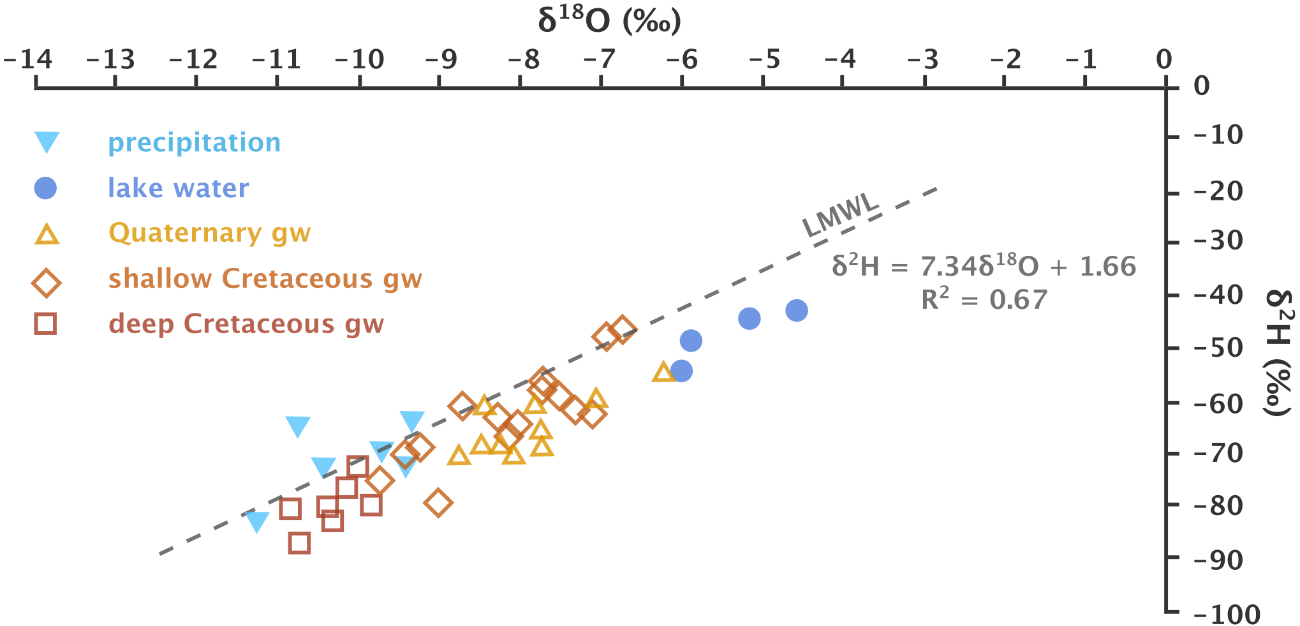7.6 Groundwater Circulation and Age
Yin and others (2011) measured stable isotope ratios in groundwater and lake water in the Habor Lake Basin of the Ordos Plateau in north-central China. Their results for the groundwater hydrochemistry revealed a range of ionic compositions, but no clear separation between aquifers. The stable isotope values, however, varied according to depth, with the deepest samples (up to 300 m) showing the most negative isotope values (Figure 40). Shallow Cretaceous aquifer groundwater and Quaternary aquifer groundwater have values between modern precipitation and modern lake water. This suggests substantial evaporation prior to recharge, as the lake water represents a highly evaporated isotope composition. The deep Cretaceous aquifer groundwater was probably recharged during the wetter climate of the glacial period at the end of the Pleistocene, during which the precipitation would have been isotopically lighter than the present, and evaporation would have been less during recharge, because of the cooler, more humid conditions than today.

Figure 40 – δ2H – δ18O diagram for water samples from the Lake Habor area in north-central China. Differences in the stable isotope composition of shallow and deep groundwater, and comparison with precipitation and lake water allow inferences to be made about the age and recharge conditions of the various groundwaters as explained in the text of Section 7.6 (after Yin et al., 2011).
